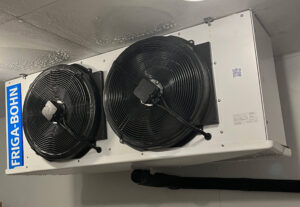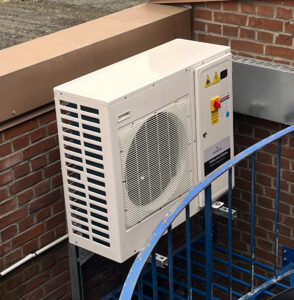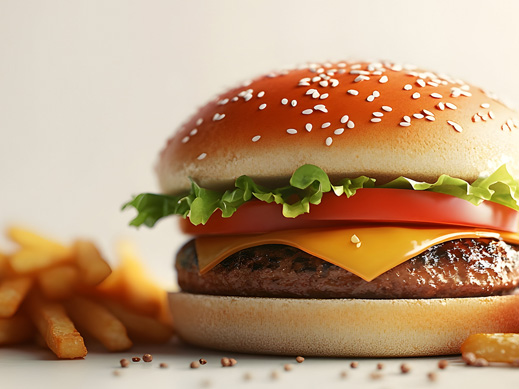Fast food in France is experiencing sustained growth of 8% per year, marked by a significant expansion in the number of outlets and a diversification of offerings.
Despite market saturation, regulatory pressures and changing habits, fast food in France continues to attract new players and innovate to meet changing consumer expectations.
The focus is on product quality, sustainability and the integration of technology to remain competitive in a constantly evolving market.
In this context, demand for cold room equipment is also constantly increasing. Players in the sector are looking for solutions that are reliable, modular, sustainable in terms of F-Gas regulations, easy to install, energy efficient and compliant with health standards in order to optimise their operations.
R-455A, a low-GWP (146) refrigerant used in condensing units, ticks all these boxes, with the added bonus of increased safety for people and property and simple maintenance that is accessible to a large number of refrigeration engineers!
A successful project in the suburbs of Lille
The outlet, which belongs to a large fast-food chain in the suburbs of Lille, has taken a major step forward by becoming one of the brand’s first establishments in France to adopt R-455A refrigerant for its cold chain. This innovative achievement is part of a strong drive to optimise energy consumption and reduce the carbon footprint.
Under the impetus of the restaurant manager, the project was completed in just a few days thanks to the involvement of engineering firm TW INGENIERIE, which designed the installation and managed the project. The son of Jacques Turchet, a renowned refrigeration engineer, Wilfrid Turchet, President of TW INGENIERIE and also a qualified refrigeration engineer, has been at the forefront of the refrigeration industry for over 35 years.
The technical choice fell on two ZX COPELAND “Plug&Play” condensing units running on R-455A (Solstice® L40X), combined with two Friga-Bohn evaporators equipping one medium temperature (MT) chamber and another low temperature (BT) chamber.
During the preliminary design phase, Pierre-Emmanuel Danet, Technical Support Manager at Climalife, worked with the project stakeholders to calculate the refrigerant charges and identify the necessary safety measures to be put in place (leak detection) following a simplified risk analysis in accordance with standard
EN 378 :
- CF+ : audible and visual alarm (1 safety measure) linked to a leak detector.
- CF- : no mandatory measures.
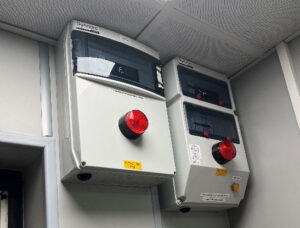
Controlled investment and initial results conclusive
It should be noted that the configuration of the cold rooms allows for energy optimisation: access to the low temperature cold room is via the medium temperature cold room, which acts as a buffer chamber, reducing heat loss from the low temperature cold room.
Here are some details of this project:
- Total CAPEX cost: €35,000 excluding VAT for the refrigeration system alone (excluding renovation of the cold room panels, which were retained).
- Comparison: the initial quotes for a CO₂ solution, were two to three times higher.
- Energy savings: a reduction of approximately 15% in energy bills was observed compared to a previous period. The previous installations ran on R-404A and were over 25 years old. The positioning of the outdoor units in a poorly ventilated equipment room also had an impact on electricity consumption. Other factors, such as the implementation of eco-friendly measures, may also have contributed to this significant reduction.
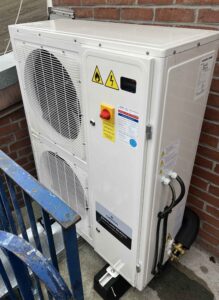
The head of the TW INGENIERIE design office was very satisfied with this first project, as he explains: “We have been working with COPELAND for many years, particularly with Fabian Gantois. As an expert in the field of refrigeration engineering, we were able to participate in the development of ranges of equipment adapted to conventional refrigerants, in order to avoid the systematic implementation of CO₂-based installations, which are costly for small and medium sized businesses and require specialist knowledge for maintenance which is not normally found in the catering sector.
TW INGENIERIE has always sought to make refrigeration accessible to as many of its customers as possible.
We also use CO₂ as a refrigerant, but mainly for industrial applications or for supermarkets with a floor area of over 2,000 m². For us, it is not the refrigerant or the equipment we offer that provides the solution, but our ingenuity. To this end, Wilfrid Turchet teaches refrigeration courses at the Douai engineering school and trains his employees, such as Julien Froger, an IMT engineer, to approach refrigeration as craftsmen, with a love of a job well done and sustainability.”
“With this project, we are demonstrating once again that conventional fluids have a place in the field of refrigeration, with economical, energy-efficient and sustainable solutions. Thanks also to our customer’s trust, we were able to safely implement an A2L fluid in a public building. The risk assessment carried out identified the additional safety measures to be provided on the installation.”
R-455A, a perfectly suited solution
R-455A offers many advantages for cold room cooling:
- A “green” refrigerant with a GWP of 146, compliant with EU F-Gas III regulation in the long term.
- Thermodynamic properties similar to HFC refrigerants with comparable operating pressures and good energy efficiency even in hot weather.
- Existing networks can be maintained and refrigeration equipment with lower CAPEX can be used, resulting in lower investment costs.
- Easy to implement.
- Easy maintenance:
- Spare parts available quickly from distributors.
- Technology known and mastered by refrigeration engineers (rapid 24-hour repair service).
- Excellent compromise between energy performance and safety.
This project in the suburbs of Lille demonstrates that more sustainable, economically accessible solutions are now within reach to support the energy transition in the fast food sector.
